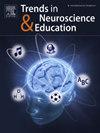Large language models outperform humans in identifying neuromyths but show sycophantic behavior in applied contexts
IF 3.4
Q2 NEUROSCIENCES
引用次数: 0
Abstract
Background: Neuromyths are widespread among educators, which raises concerns about misconceptions regarding the (neural) principles underlying learning in the educator population. With the increasing use of large language models (LLMs) in education, educators are increasingly relying on these for lesson planning and professional development. Therefore, if LLMs correctly identify neuromyths, they may help to dispute related misconceptions.
Method: We evaluated whether LLMs can correctly identify neuromyths and whether they may hint educators to neuromyths in applied contexts when users ask questions comprising related misconceptions. Additionally, we examined whether explicitly prompting LLMs to base their answer on scientific evidence or to correct unsupported assumptions would decrease errors in identifying neuromyths.
Results: LLMs outperformed humans in identifying neuromyth statements as used in previous studies. However, when presented with applied user-like questions comprising misconceptions, they struggled to highlight or dispute these. Interestingly, explicitly asking LLMs to correct unsupported assumptions increased the likelihood that misconceptions were flagged considerably, while prompting the models to rely on scientific evidence had only little effects.
Conclusion: While LLMs outperformed humans at identifying isolated neuromyth statements, they struggled to hint users towards the same misconception when they were included in more applied user-like questions—presumably due to LLMs’ tendency toward sycophantic responses. This limitation suggests that, despite their potential, LLMs are not yet a reliable safeguard against the spread of neuromyths in educational settings. However, when users explicitly prompt LLMs to correct unsupported assumptions—an approach that may initially seem counterintuitive–this effectively reduced sycophantic responses.
大型语言模型在识别神经神话方面优于人类,但在应用环境中表现出谄媚的行为
背景:神经神话在教育工作者中普遍存在,这引起了人们对教育工作者群体中关于学习基础(神经)原理的误解的关注。随着在教育中越来越多地使用大型语言模型(llm),教育工作者越来越依赖于这些课程计划和专业发展。因此,如果法学硕士正确识别神经神话,他们可能有助于争议相关的误解。方法:我们评估法学硕士是否可以正确识别神经神话,以及当用户提出包含相关误解的问题时,他们是否可以在应用环境中提示教育者神经神话。此外,我们还研究了明确提示法学硕士基于科学证据或纠正不受支持的假设是否会减少识别神经神话的错误。结果:法学硕士在识别先前研究中使用的神经神话陈述方面优于人类。然而,当出现包含误解的应用用户类问题时,他们很难突出或反驳这些问题。有趣的是,明确要求法学硕士纠正不受支持的假设,大大增加了错误观念被标记出来的可能性,而促使模型依赖科学证据的效果却很小。结论:虽然llm在识别孤立的神经神话语句方面优于人类,但当它们被包含在更实用的用户类问题中时,它们很难暗示用户同样的误解——可能是由于llm倾向于阿谀奉承的反应。这一限制表明,尽管法学硕士有潜力,但它还不是防止神经神话在教育环境中传播的可靠保障。然而,当用户明确提示法学硕士纠正不受支持的假设时(这种方法最初可能看起来违反直觉),这有效地减少了谄媚的反应。
本文章由计算机程序翻译,如有差异,请以英文原文为准。
求助全文
约1分钟内获得全文
求助全文
来源期刊

Trends in Neuroscience and Education
NEUROSCIENCES-
CiteScore
6.30
自引率
6.10%
发文量
22
审稿时长
65 days
 求助内容:
求助内容: 应助结果提醒方式:
应助结果提醒方式:


